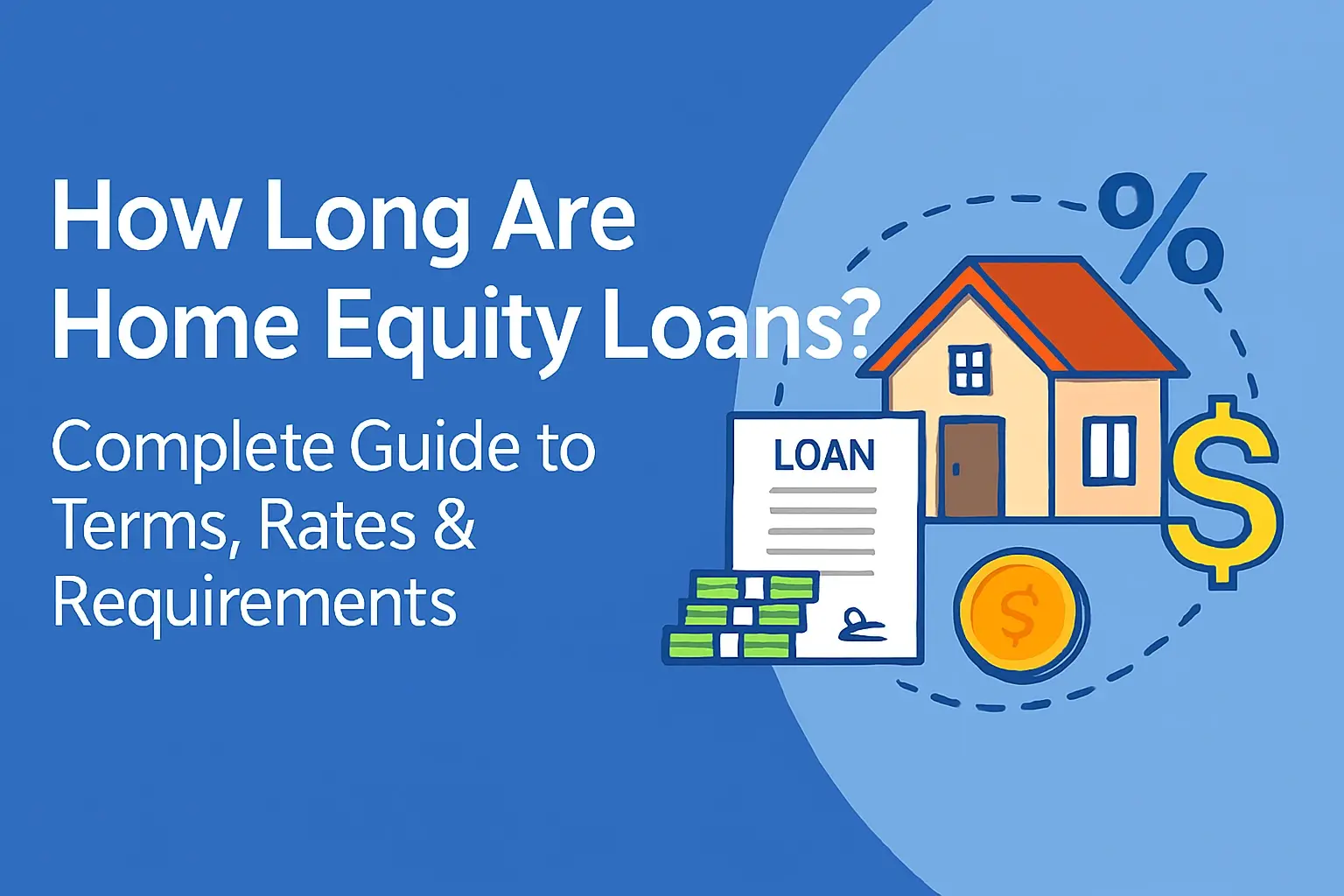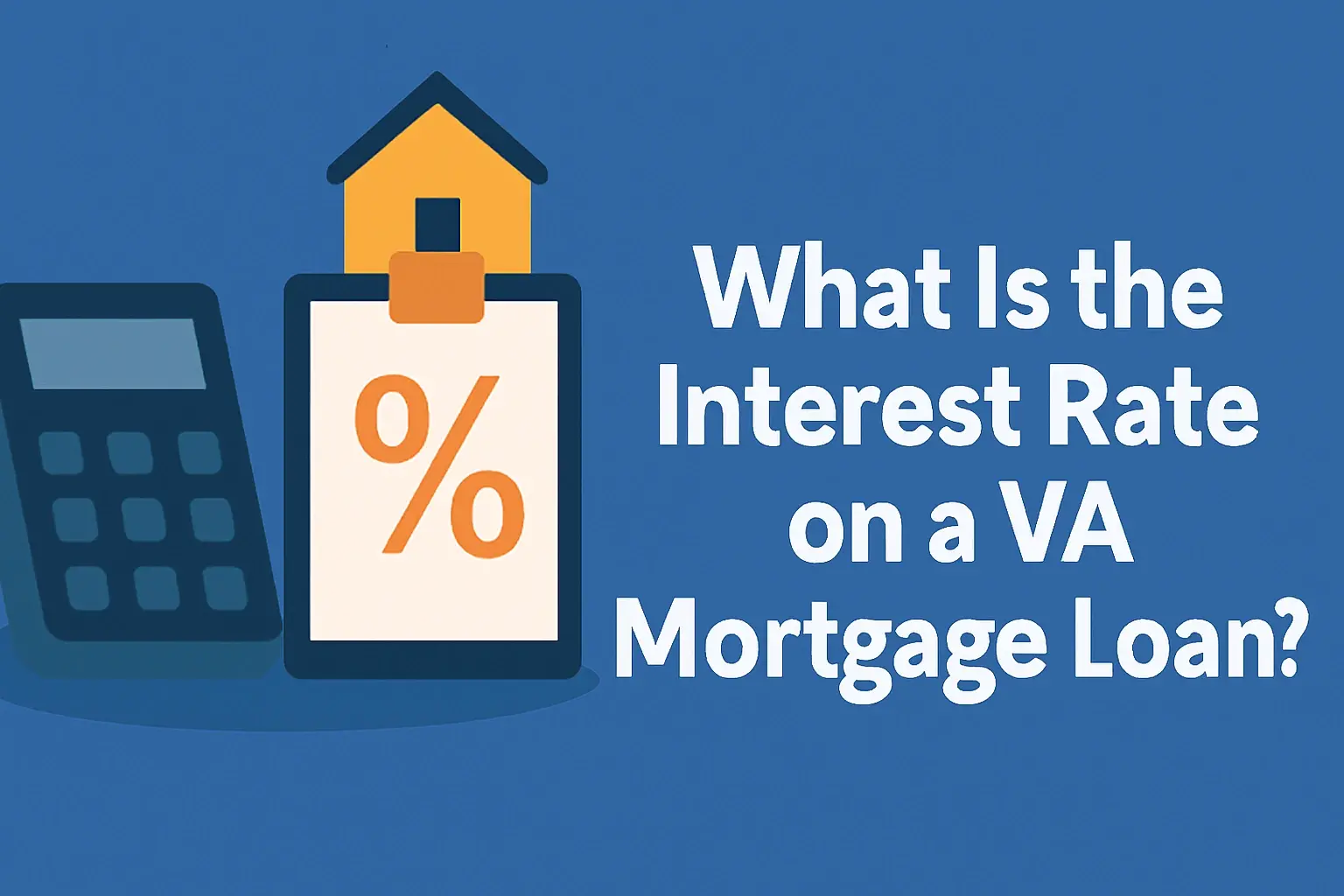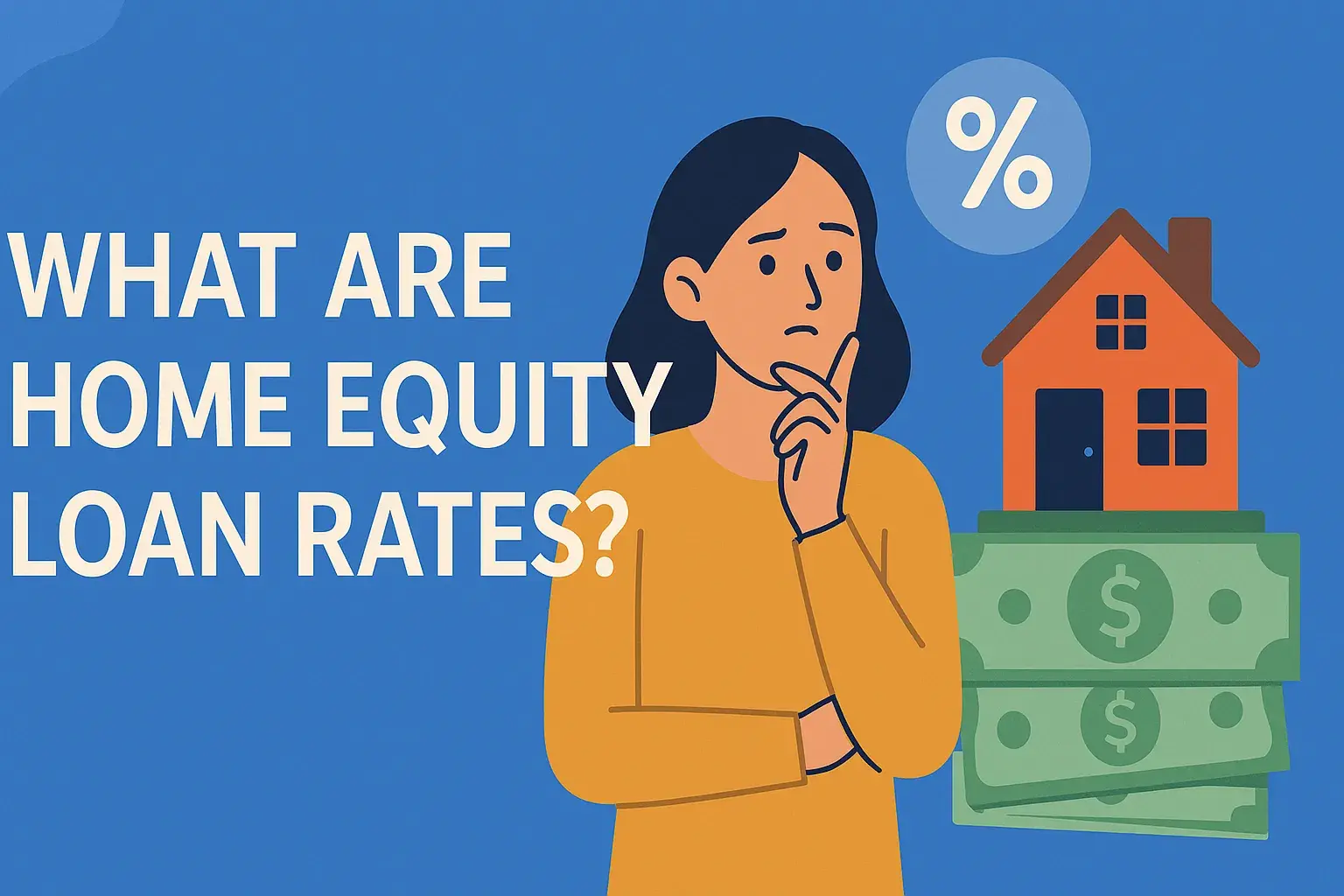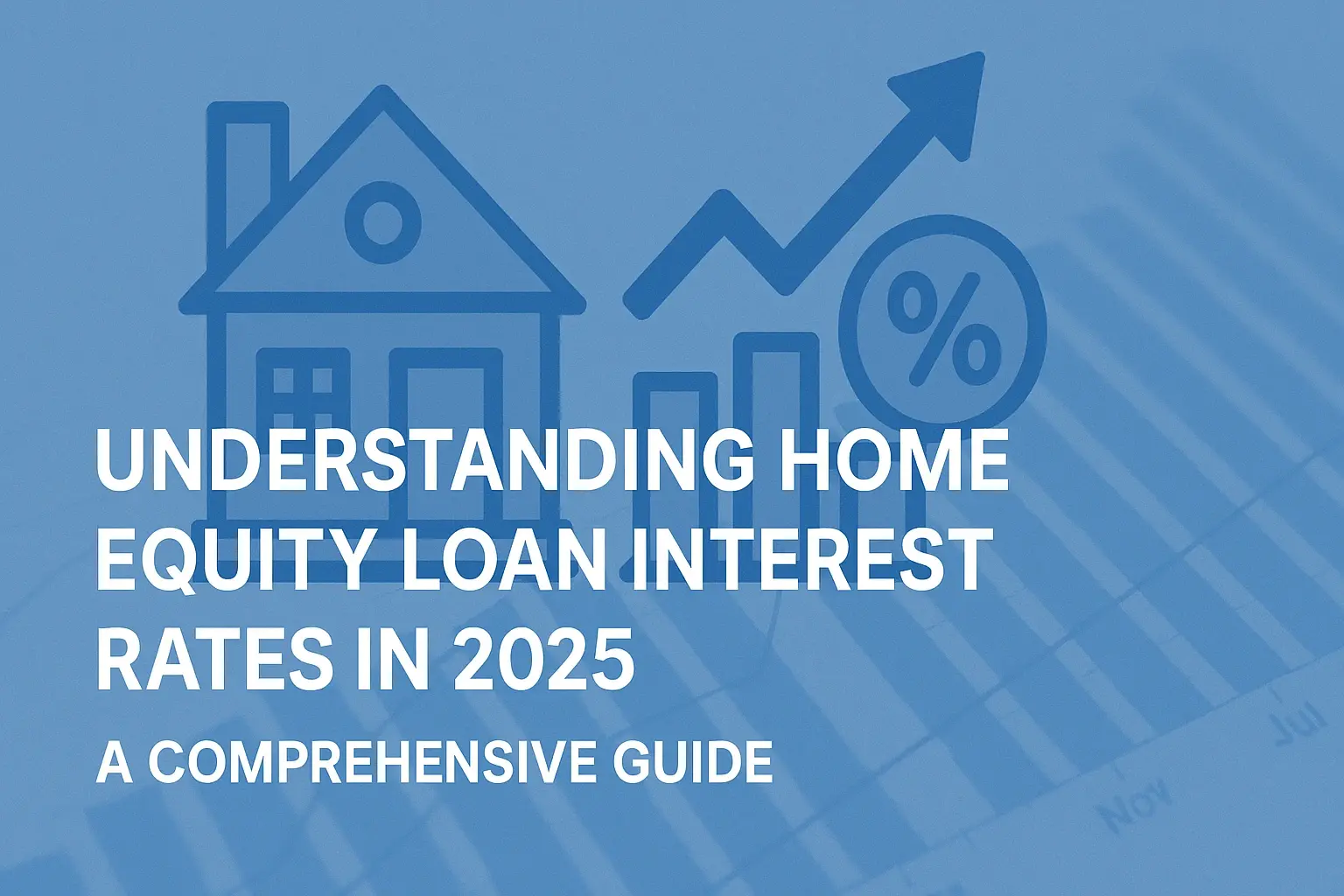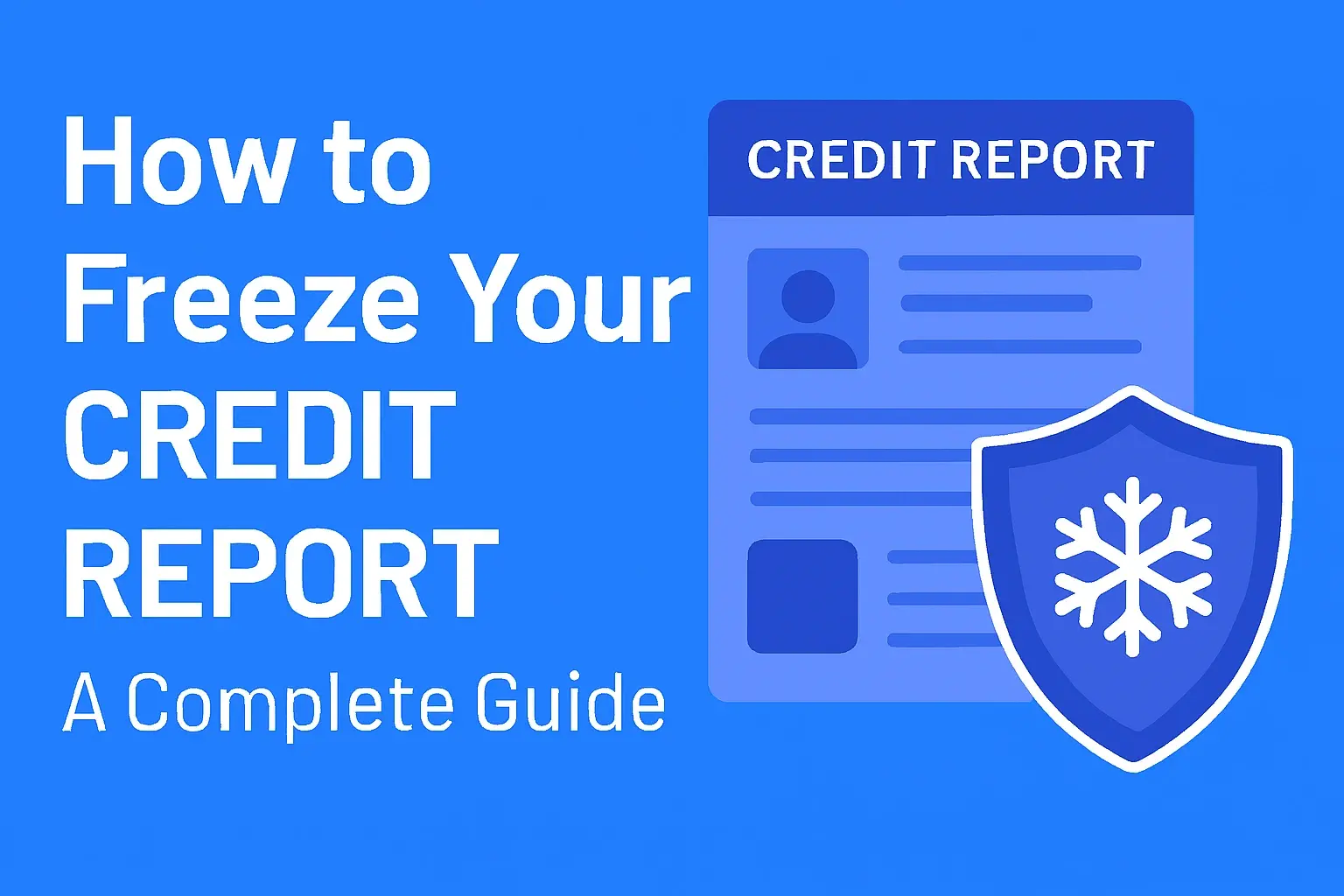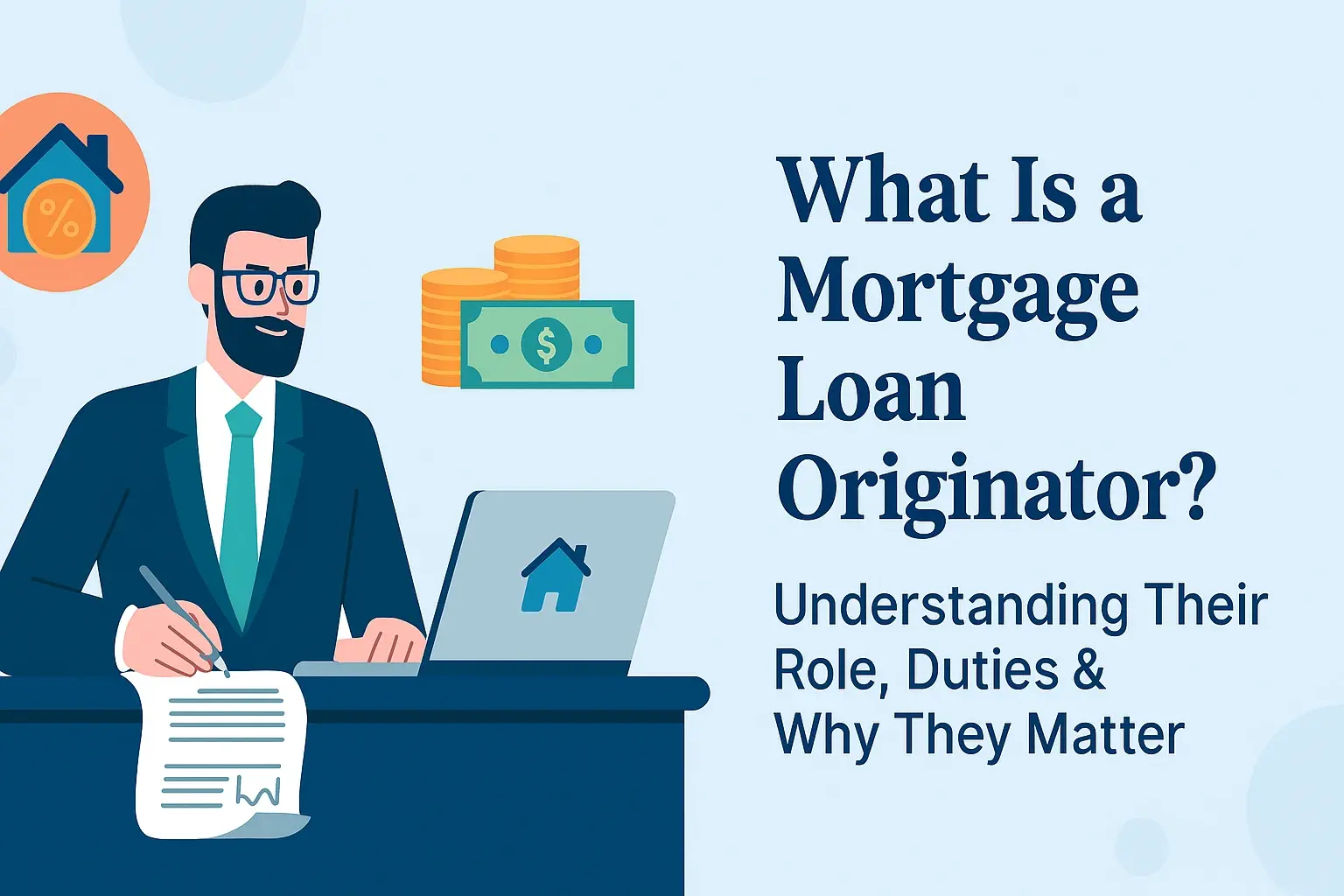-
Posted on: 22 Mar 2025

-
Unlock the dream of homeownership with a VA loan by understanding and boosting your credit score. This guide provides actionable strategies, current 2025 insights, and a clear path to qualifying for the VA home loan benefits you've earned. Discover how to navigate credit requirements and secure your ideal home.
Understanding Credit Scores for VA Home Loans
For many veterans, the path to homeownership is paved with the benefits of a VA home loan. These loans, backed by the U.S. Department of Veterans Affairs, offer significant advantages like no down payment requirements and competitive interest rates. However, qualifying for any mortgage, including a VA loan, hinges on a crucial factor: your credit score. Understanding what a credit score is, how it's calculated, and what lenders look for is the foundational step in securing your home. This section delves into the intricacies of credit scoring and its direct relevance to VA loan approval.
A credit score is a three-digit number that represents your creditworthiness – essentially, how likely you are to repay borrowed money. It's a snapshot of your financial behavior, derived from the information in your credit reports. The most common scoring models are FICO and VantageScore, with FICO being the preferred model for most mortgage lenders. These scores typically range from 300 to 850, with higher scores indicating lower risk to lenders.
Several key factors contribute to your credit score:
- Payment History (35%): This is the most significant factor. Making payments on time, every time, is paramount. Late payments, defaults, and bankruptcies can severely damage your score.
- Amounts Owed (30%): This refers to your credit utilization ratio – the amount of credit you're using compared to your total available credit. Keeping this ratio low, ideally below 30%, is crucial.
- Length of Credit History (15%): A longer history of responsible credit management generally leads to a higher score.
- Credit Mix (10%): Having a mix of credit types (e.g., credit cards, installment loans like auto loans or mortgages) can be beneficial, but it's less impactful than payment history or amounts owed.
- New Credit (10%): Opening multiple new credit accounts in a short period can temporarily lower your score, as it may indicate financial distress.
For VA loans, while there isn't a strict minimum credit score set by the VA itself, lenders who issue these loans will have their own criteria. This is where understanding your score becomes critical. A higher credit score demonstrates to lenders that you are a reliable borrower, reducing their perceived risk and increasing your chances of approval. In 2025, the landscape of lending continues to emphasize credit health, making a strong score more important than ever.
VA Loan Credit Score Requirements: What Veterans Need to Know
Navigating the specifics of VA loan credit score requirements can be confusing, as the VA doesn't mandate a universal minimum score. Instead, it sets guidelines for lenders, who then establish their own benchmarks. This means the "ideal" credit score can vary from one lender to another. However, understanding the general expectations and the VA's perspective is key to preparation. In 2025, the market remains competitive, and lenders are diligent in their assessments.
The VA's Role: The Department of Veterans Affairs guarantees a portion of the loan, reducing the risk for the lender. This guarantee allows lenders to be more flexible with certain borrower qualifications compared to conventional loans. However, the VA's primary concern is ensuring that borrowers can realistically afford and manage their mortgage payments. They rely on lenders to assess this capability, which heavily involves reviewing credit history.
Lender-Specific Requirements: Most lenders participating in the VA loan program typically look for a credit score of 620 or higher. This is a common benchmark for many mortgage types, and VA loans are no exception. A score in this range generally indicates a borrower who has managed credit responsibly. However, some lenders might have higher requirements, especially in volatile economic conditions or if other risk factors are present.
Below 620 Scores: What happens if your score falls below 620? It doesn't automatically mean you're out of luck. Some lenders may consider borrowers with scores in the high 500s (e.g., 580-619), but these cases often require more scrutiny. You might need to provide additional documentation, demonstrate a strong income, have a stable employment history, or present a compelling reason for past credit issues. In some instances, lenders might require a larger down payment, though this is less common with VA loans that typically offer no down payment options.
Beyond the Score: Compensating Factors: Lenders don't look at your credit score in isolation. They also consider "compensating factors" that can help offset a less-than-perfect credit score. These can include:
- Stable Employment and Income: A consistent job history and sufficient income to comfortably cover the mortgage payment, property taxes, and insurance.
- Low Debt-to-Income Ratio (DTI): A DTI below 41% is generally preferred, meaning your total monthly debt payments (including the new mortgage) are less than 41% of your gross monthly income.
- Significant Savings or Assets: Having a healthy savings account or other assets can demonstrate financial stability.
- Reasonable Explanation for Past Issues: If you had a period of financial difficulty (e.g., job loss, medical emergency), providing a clear and credible explanation can be helpful.
The Importance of a Good Credit Score: Even if you can qualify with a score below 620, having a higher score (e.g., 700+) offers significant advantages. It can lead to:
- Easier loan approval.
- Potentially better interest rates, saving you thousands over the life of the loan.
- More lender options.
In summary, while 620 is a common target for VA loan credit scores, understanding lender-specific policies and the impact of compensating factors is crucial. Proactive credit improvement is always the best strategy.
Why Your Credit Score Matters for VA Loan Approval
The credit score is a cornerstone of the mortgage lending process, and for VA loans, it plays a pivotal role in determining eligibility and loan terms. Lenders use your credit score as a primary indicator of your financial responsibility and your ability to manage debt. For veterans seeking to leverage their VA loan benefit, understanding this connection is paramount to a successful application. In 2025, the emphasis on financial prudence continues to be a guiding principle for lenders.
Risk Assessment: At its core, a credit score helps lenders assess the risk associated with lending you a substantial amount of money. A higher score suggests a history of responsible borrowing and repayment, signaling a lower risk of default. Conversely, a lower score might indicate a higher likelihood of missed payments or financial instability, which lenders are hesitant to embrace. The VA guarantee mitigates some lender risk, but they still conduct their own underwriting to ensure loan performance.
Interest Rates and Loan Terms: Your credit score directly influences the interest rate you'll be offered. Borrowers with higher credit scores typically qualify for lower interest rates. Over the 15, 30, or even 40-year term of a mortgage, even a small difference in interest rate can translate into tens of thousands of dollars saved. A strong credit score can also make you eligible for more favorable loan terms and potentially fewer lender fees.
Loan Approval Likelihood: While the VA doesn't set a minimum score, lenders do. A score that meets or exceeds a lender's minimum requirement significantly increases your chances of loan approval. If your score is below their threshold, approval becomes much more challenging, often requiring extensive documentation, compensating factors, or alternative loan programs.
Demonstrating Financial Stability: A good credit score is a tangible representation of your financial discipline. It shows that you can manage multiple credit obligations, pay bills on time, and maintain a healthy balance between credit usage and available credit. This track record reassures lenders that you possess the financial maturity to handle the long-term commitment of a mortgage.
The VA's Perspective: While lenders set the score requirements, the VA's underlying goal is to ensure veterans can achieve sustainable homeownership. A credit score that is too low might suggest that a veteran is at risk of financial hardship, which could lead to default and the loss of their home. By requiring lenders to assess creditworthiness, the VA indirectly promotes responsible financial behavior among its beneficiaries.
Impact of Credit Report Details: It's not just the score itself, but the details within your credit report that matter. Lenders will scrutinize:
- Public Records: Bankruptcies, foreclosures, and liens can be significant red flags.
- Collections Accounts: Outstanding debts in collections can negatively impact your score and lender confidence.
- Late Payments: Even a few late payments can lower your score and raise concerns.
- High Credit Card Balances: High credit utilization ratios are a major detractor.
In essence, your credit score acts as a financial report card for lenders. For veterans aiming to secure a VA home loan, investing time and effort into improving and maintaining a strong credit score is one of the most impactful steps they can take. It opens doors to better loan terms, increases the likelihood of approval, and ultimately contributes to a more secure and affordable homeownership experience.
Actionable Steps to Boost Your Credit Score for VA Loan Qualification
Improving your credit score takes time and consistent effort, but the rewards for VA loan qualification are substantial. By implementing strategic financial habits, you can significantly enhance your creditworthiness. This section outlines concrete steps you can take, focusing on the factors that most influence your score, and providing insights relevant for 2025. Remember, consistency is key, and starting early is always beneficial.
1. Pay All Bills On Time, Every Time:
- The Foundation: As mentioned, payment history is the most critical factor. Even a single late payment can drop your score.
- Actionable Steps:
- Set up automatic payments for all recurring bills (credit cards, loans, utilities, rent if reported).
- Use calendar reminders or budgeting apps to track due dates.
- If you miss a payment, pay it immediately to minimize the negative impact. Contact the creditor to see if they can waive late fees or prevent reporting to credit bureaus, especially if it's a first-time occurrence.
2. Reduce Your Credit Utilization Ratio (CUR):
- The Goal: Aim to keep your CUR below 30% on each credit card and overall. Lower is better, ideally below 10%.
- Actionable Steps:
- Pay Down Balances: Focus on paying down the balances of your credit cards, especially those with high utilization.
- Make Multiple Payments: Pay your credit card balance more than once a month. If your statement closing date is the 15th and your due date is the 10th, paying down the balance before the 15th can result in a lower reported balance.
- Request a Credit Limit Increase: If you have a good payment history with a particular card issuer, you can request an increase in your credit limit. This will lower your CUR if your spending remains the same. Ensure the issuer does a "soft pull" for this request, which doesn't affect your score.
- Avoid Maxing Out Cards: Never carry balances close to your credit limit.
3. Address Delinquent Accounts and Collections:
- The Impact: Past due accounts and accounts in collections significantly damage your score.
- Actionable Steps:
- Prioritize Payment: If you have accounts in collections, prioritize paying them off or negotiating a settlement.
- Negotiate "Pay for Delete": When dealing with collection agencies, try to negotiate a "pay for delete" agreement. This means they agree to remove the collection from your credit report in exchange for payment. Get this agreement in writing before paying.
- Check for Errors: Ensure the debt is valid and accurately reported before paying.
4. Avoid Opening Unnecessary New Credit:
- The Caution: Each hard inquiry from applying for new credit can slightly lower your score. Too many inquiries in a short period can be a red flag.
- Actionable Steps:
- Limit Applications: Only apply for credit when absolutely necessary.
- Shop Smart: If you need to shop for loans (e.g., auto loan), do so within a short timeframe (e.g., 14-45 days, depending on the scoring model) so that multiple inquiries for the same type of loan are treated as a single inquiry.
5. Maintain a Healthy Credit Mix:
- The Benefit: While less impactful than payment history, having a mix of credit types (e.g., revolving credit like credit cards and installment loans like a car loan or student loan) can positively influence your score.
- Actionable Steps:
- Don't Open Accounts Just for Mix: This factor is minor. Focus on the other, more impactful strategies. If you naturally have different types of credit, that's great. If not, don't force it.
6. Monitor Your Credit Reports Regularly:
- The Importance: Errors on your credit report can drag down your score.
- Actionable Steps:
- Get Free Reports: Obtain your free credit reports from Equifax, Experian, and TransUnion at AnnualCreditReport.com. You are entitled to one free report from each bureau every week in 2025.
- Review for Accuracy: Check for any accounts you don't recognize, incorrect personal information, or erroneous late payment markers.
- Dispute Errors: If you find inaccuracies, dispute them with the credit bureaus immediately. (See a later section for detailed dispute process).
7. Consider a Secured Credit Card or Credit-Builder Loan:
- For Those Rebuilding: If you have limited credit history or past issues, these tools can help establish or rebuild positive credit.
- Actionable Steps:
- Secured Credit Card: Requires a cash deposit that typically becomes your credit limit. Use it for small purchases and pay it off in full each month.
- Credit-Builder Loan: A small loan where the funds are held by the lender and released to you after you've made all the payments. This demonstrates consistent repayment.
Example Scenario:
Meet Sarah, a veteran with a 590 credit score. She wants to buy a home using her VA loan benefit. She has two credit cards with balances close to their limits and a few late payments from two years ago. Sarah decides to take action:
- Payment History: She sets up auto-pay for all her current bills and pays off a small past-due utility bill.
- Credit Utilization: She stops using her credit cards for a month and pays down one card's balance by $500, bringing its utilization from 95% to 40%. She also calls her issuer to request a credit limit increase on another card.
- Collections: She finds an old medical bill in collections and negotiates a settlement for less than the full amount, getting it in writing.
- Monitoring: She pulls her credit report and notices an incorrect late payment marker on one card. She files a dispute with the credit bureau.
After three months of these consistent actions, Sarah's credit score improves to 650. She can now approach lenders with confidence, knowing she has significantly boosted her chances of VA loan approval.
Common Credit Mistakes to Avoid When Aiming for a VA Loan
When preparing for a VA home loan, avoiding common credit pitfalls is just as important as actively improving your score. Lenders scrutinize your credit report for specific red flags that can derail your application. Being aware of these mistakes can help you steer clear of them and present a stronger financial profile. Here are critical errors to avoid in 2025 and beyond:
1. Missing Payments:
- The Pitfall: This is the single most damaging mistake. Even one 30-day late payment can significantly lower your score and appear as a major concern to lenders.
- How to Avoid: Implement robust payment reminders, set up automatic payments, and maintain a buffer in your bank account to prevent accidental overdrafts that could lead to missed payments.
2. Maxing Out Credit Cards:
- The Pitfall: High credit utilization ratios (above 30%) signal to lenders that you are heavily reliant on credit, potentially indicating financial strain.
- How to Avoid: Actively manage your credit card balances. Pay them down strategically, consider requesting credit limit increases, and avoid using your cards for large, unnecessary purchases close to your application date.
3. Closing Old Credit Accounts:
- The Pitfall: Closing an old credit card account can reduce your average age of credit history and decrease your overall available credit, potentially increasing your credit utilization ratio.
- How to Avoid: Keep older, unused credit accounts open, especially if they have no annual fee. Use them occasionally for small purchases and pay them off immediately to keep them active and benefit your credit history length and utilization.
4. Applying for Too Much New Credit:
- The Pitfall: Multiple hard inquiries from applying for various credit cards, loans, or lines of credit in a short period can signal desperation or risky behavior to lenders.
- How to Avoid: Be judicious with credit applications. Only apply for credit you genuinely need and space out applications over several months.
5. Co-signing Loans for Others:
- The Pitfall: When you co-sign a loan, that debt counts towards your debt-to-income ratio, even if the primary borrower is making all the payments. If the primary borrower defaults, you are fully responsible, and it will negatively impact your credit.
- How to Avoid: Politely decline requests to co-sign loans unless you are fully prepared for the financial responsibility and potential credit impact.
6. Ignoring Small Debts or Collections:
- The Pitfall: Small, unpaid debts can eventually be sent to collections, which severely damages your credit score. Even if the amount is small, a collection account is a significant negative mark.
- How to Avoid: Address all outstanding debts promptly. Regularly check your credit reports for any unfamiliar or outstanding collection accounts and deal with them proactively.
7. Not Checking Credit Reports for Errors:
- The Pitfall: Inaccurate information on your credit report, such as incorrect late payments or accounts you don't own, can unfairly lower your score.
- How to Avoid: Obtain your free credit reports annually (or more frequently in 2025) from all three major bureaus and meticulously review them for any errors. Dispute any inaccuracies immediately.
8. Making Large Purchases on Credit Before Applying:
- The Pitfall: Buying a new car, furniture, or other significant items on credit shortly before or during the VA loan application process can increase your debt load and lower your credit score.
- How to Avoid: Postpone any major credit-financed purchases until after your VA loan has closed. Stick to your budget and use cash or savings for large expenses during this critical period.
9. Not Understanding the VA Loan Credit Requirements:
- The Pitfall: Assuming all lenders have the same credit score requirements or believing a low score automatically disqualifies you without exploring options.
- How to Avoid: Research different VA loan lenders and understand their specific credit score expectations. Speak with a VA-savvy loan officer who can guide you based on your credit profile.
By being vigilant and avoiding these common mistakes, veterans can significantly strengthen their credit profile and improve their chances of a smooth and successful VA home loan approval process.
What If Your Credit Score is Too Low for a VA Loan?
Discovering that your credit score is below the threshold required by VA loan lenders can be disheartening, but it's not a dead end. The VA loan program is designed to be accessible to veterans, and there are often pathways to overcome credit challenges. This section provides practical advice and strategies for veterans whose credit scores are currently too low, offering hope and actionable steps for improvement in 2025.
1. Understand the Specifics of Your Low Score:
- Identify the Root Cause: Obtain your credit reports from Equifax, Experian, and TransUnion. Analyze them to understand *why* your score is low. Is it late payments, high credit card balances, collections, public records (like bankruptcy or foreclosure), or a lack of credit history?
- Consult a Loan Officer: A good VA loan specialist can review your credit reports with you and provide insights into what specific issues are most concerning to lenders. They can also advise on whether your situation is salvageable with their institution or if alternative approaches are needed.
2. Focus on Credit Improvement Strategies:
- Prioritize Payment History: Make all future payments on time. This is non-negotiable and the most impactful change you can make.
- Reduce Credit Utilization: Aggressively pay down credit card balances. Aim to get each card below 30% utilization, and ideally below 10%.
- Address Collections and Delinquencies: Work to resolve any outstanding collection accounts or past-due payments. Negotiate settlements if possible and get agreements in writing.
- Avoid New Credit: Do not apply for new credit while you are trying to improve your score for a VA loan.
3. Explore VA Loan Lenders with More Flexible Requirements:
- Lender Variation: Not all lenders have the same credit score cutoffs. Some may be willing to work with scores in the high 500s (e.g., 580-619) if other factors are strong.
- Ask About "Compensating Factors": Inquire about what compensating factors a lender might consider. Strong income, stable employment, significant savings, and a low debt-to-income ratio can sometimes offset a lower credit score.
- Shop Around: Don't settle for the first lender you speak with. Contact multiple VA-approved lenders and explain your situation.
4. Consider a Co-Borrower (with Caution):
- How it Works: If you have a creditworthy spouse or family member who is willing to co-borrow, their credit score and income can be added to your application. This can significantly improve your chances of approval and potentially secure better loan terms.
- Important Considerations:
- The co-borrower must be willing and able to take on the responsibility.
- Their income and assets will be considered.
- Ensure the co-borrower understands the implications for their own credit and financial future.
- The co-borrower does not need to be a veteran or eligible for VA benefits themselves, but they must be married to the veteran borrower or meet specific VA guidelines for co-borrowers.
5. Wait and Rebuild Your Credit:
- The Patient Approach: If your credit score is significantly low (e.g., below 580) or if you have recent major negative marks like bankruptcy or foreclosure, it might be best to wait and focus on rebuilding.
- Timeline:
- Bankruptcy: Chapter 7 typically requires a 2-year waiting period after discharge, while Chapter 13 may require 1 year of successful payments.
- Foreclosure: Generally requires a 2-year waiting period after the foreclosure is complete.
- Other Issues: Even without bankruptcy or foreclosure, give yourself 6-12 months of consistent positive credit behavior to see a noticeable score improvement.
- Tools for Rebuilding: Utilize secured credit cards, credit-builder loans, and ensure all current accounts are managed perfectly during this waiting period.
6. Explore VA Loan Assumptions (Limited Availability):
- What it Is: In rare cases, a veteran might be able to assume an existing VA loan from another veteran. This means taking over the seller's loan, including its interest rate and terms. The buyer must still meet VA eligibility requirements and be approved by the lender.
- Considerations: This is not a common option and depends heavily on the seller being willing and able to transfer their loan. The buyer's creditworthiness is still assessed.
7. Understand VA Loan Eligibility Requirements Beyond Credit:
- Service Requirements: Ensure you meet the VA's service eligibility criteria.
- Income and Employment Stability: Lenders will verify your income, employment history, and ability to repay the loan.
- Certificate of Eligibility (COE): You'll need this to prove your entitlement.
A low credit score is a hurdle, not an insurmountable barrier. By understanding the reasons behind it, implementing a focused credit improvement plan, and exploring all available options with knowledgeable professionals, veterans can still achieve their goal of homeownership through the VA loan program.
Understanding Your Credit Reports and How to Dispute Errors
Your credit reports are the detailed histories that credit bureaus (Equifax, Experian, and TransUnion) compile about your borrowing and repayment activities. These reports are the foundation upon which your credit score is calculated. For VA loan qualification, ensuring these reports are accurate and error-free is critical. This section explains what’s in your credit reports and how to effectively dispute any inaccuracies you find, a vital step for any veteran in 2025.
What Information is Included in Your Credit Reports?
Each of your three credit reports contains several key sections:
- Personal Information: Your name, Social Security number, date of birth, current and previous addresses, and employment history.
- Credit Accounts: A list of all your credit cards, loans (mortgages, auto, student, personal), and any other lines of credit. For each account, you'll see the creditor's name, account number (often partially masked), date opened, credit limit or loan amount, current balance, and payment history (including on-time payments, late payments, and current status).
- Public Records: Information from public sources such as bankruptcies, foreclosures, tax liens, and civil judgments.
- Inquiries: A record of who has accessed your credit report. "Hard inquiries" occur when you apply for credit and can slightly lower your score. "Soft inquiries" (e.g., for background checks or pre-approved offers) do not affect your score.
Why Accuracy Matters for VA Loans:
Inaccurate information on your credit report can:
- Lower Your Credit Score: An erroneous late payment or an account that isn't yours can significantly reduce your score, potentially impacting your VA loan eligibility or interest rate.
- Raise Lender Concerns: Lenders review your credit report for any negative marks. Errors can lead to unnecessary questions or delays in the underwriting process.
- Cause Loan Denial: In severe cases, significant inaccuracies could lead to your VA loan application being denied.
How to Obtain Your Credit Reports:
The Fair Credit Reporting Act (FCRA) entitles you to a free copy of your credit report from each of the three major bureaus annually. However, due to the ongoing impact of economic conditions, you can access your reports weekly for free at AnnualCreditReport.com. This is the official, government-mandated source for free credit reports.
How to Dispute Errors on Your Credit Report:
If you find any inaccuracies, you have the right to dispute them. Here's the process:
- Identify the Error: Carefully review each section of your reports from all three bureaus. Look for incorrect personal information, accounts you don't recognize, incorrect payment statuses (e.g., a payment marked late when it was on time), incorrect balances, or duplicate negative entries.
- Gather Evidence: Collect any documentation that supports your claim. This could include copies of canceled checks, bank statements, billing statements, letters from creditors, or any other relevant proof.
- Contact the Credit Bureau: You can dispute errors online, by mail, or by phone. The most efficient method is usually online through the credit bureau's website.
- Online: Visit the website of the specific bureau (Equifax, Experian, TransUnion) and look for their "Dispute" or "Help" section.
- By Mail: Write a clear, concise letter detailing the errors and include copies (never originals) of your supporting documentation. Send it via certified mail with return receipt requested to the address provided by the credit bureau for disputes.
- What to Include in Your Dispute Letter/Online Submission:
- Your full name, address, and Social Security number.
- The specific account number or item you are disputing.
- A clear explanation of why you believe the information is inaccurate.
- Copies of all supporting documentation.
- State that you are requesting an investigation under the FCRA.
- The Bureau's Investigation: Once you file a dispute, the credit bureau has 30 days (or 45 days if you provide additional information after the initial dispute) to investigate. They will contact the furnisher of the information (e.g., the bank or credit card company) to verify its accuracy.
- Resolution:
- If the investigation finds the information is inaccurate, it must be corrected or removed from your report.
- If the information is verified as accurate, it will remain on your report.
- The credit bureau must send you a written notice of the results of their investigation.
- If an error is corrected, you can request that the corrected information be sent to any other credit bureaus where it may have been reported.
Disputing with the Furnisher:
You can also dispute directly with the company that provided the information to the credit bureau (the "furnisher"). This can sometimes be faster. You would send a dispute letter to the furnisher, providing evidence. If they confirm the error, they will report the correction to the credit bureaus.
Important Tips for Disputes:
- Be Persistent: If your initial dispute is denied, review your evidence and consider refiling, especially if you have new documentation.
- Keep Records: Maintain copies of all correspondence, including letters, emails, and receipts for certified mail.
- Be Patient: The dispute process takes time.
By actively monitoring your credit reports and promptly disputing any errors, you take a significant step toward ensuring your credit profile accurately reflects your responsible financial behavior, which is crucial for a smooth VA loan application.
Credit-Building Strategies Tailored for Veterans
Veterans possess unique experiences and often access specific programs that can be leveraged for credit building. Beyond general advice, certain strategies can be particularly effective for those who have served. This section focuses on credit-building tactics that align with veteran resources and circumstances, aiming to enhance your financial standing for VA loan qualification in 2025.
1. Utilize Military-Specific Benefits and Programs:
- Credit Monitoring Services: Many military support organizations and financial institutions offer free or discounted credit monitoring services to service members and veterans. These can alert you to potential fraud or errors quickly.
- Financial Readiness Programs: The military often provides financial education and counseling services. Take advantage of these resources to learn about budgeting, credit management, and debt reduction strategies tailored to military life.
- No-Interest Loans or Grants: In times of financial hardship, organizations like the USO or various military relief societies may offer no-interest loans or grants. If you utilize these, ensure you repay them strictly according to the terms to avoid negative credit reporting.
2. Leverage Your VA Loan Experience (If Applicable):
- Existing VA Loans: If you already have a VA loan or other VA-backed loans, ensuring these are paid on time is paramount. A history of timely payments on a VA loan demonstrates strong creditworthiness.
- VA Home Loan as a Stepping Stone: Once you've successfully managed a VA home loan, this positive repayment history becomes a powerful asset for future credit endeavors.
3. Consider Secured Credit Cards or Credit-Builder Loans:
- For Rebuilding or Establishing Credit: If your credit history is thin or damaged, these tools are invaluable.
- Secured Credit Cards: You provide a cash deposit (e.g., $200-$500) that becomes your credit limit. Use it for small, everyday purchases and pay the balance in full each month. This demonstrates responsible revolving credit management. Many banks and credit unions offer these.
- Credit-Builder Loans: These are small loans where the borrowed amount is held in a savings account by the lender and released to you only after you've made all the scheduled payments. This builds a positive payment history for an installment loan.
4. Manage Existing Debt Strategically:
- Debt Snowball vs. Avalanche: Choose a debt repayment method that works for you. The "snowball" method pays off the smallest debts first for quick wins, while the "avalanche" method tackles high-interest debts first to save money long-term. Both methods reduce your overall debt burden and improve your credit utilization.
- Avoid New Debt: While working towards a VA loan, resist the temptation to take on new car loans, personal loans, or significant credit card debt.
5. Build a Positive Payment History on All Accounts:
- Beyond Credit Cards: Ensure payments for utilities, rent (if reported), and other recurring bills are made on time. Some services allow you to report these payments to credit bureaus, which can help build your credit.
- Set Up Reminders: Use your smartphone, calendar, or banking apps to set up payment reminders for all your financial obligations.
6. Understand the Impact of Deployment and PCS Orders:
- SCRA Protections: The Servicemembers Civil Relief Act (SCRA) provides protections for service members on active duty, including interest rate caps and protection from certain credit actions. Familiarize yourself with these rights.
- Deployment Impact: If deployment impacts your ability to manage finances, explore options like setting up automatic payments, granting power of attorney to a trusted individual, or contacting your lender to discuss temporary payment arrangements. Ensure these arrangements do not result in negative credit reporting.
7. Consider a Co-Borrower (if necessary and appropriate):
- Strengthening the Application: As mentioned previously, a creditworthy spouse or family member can co-borrow. This is a strategic move if your credit score is the primary obstacle. Ensure the co-borrower understands the commitment.
Example Scenario:
Sergeant Miller is an Army veteran with a limited credit history due to frequent moves and a focus on military duties. He wants to buy a home using his VA loan benefit but has a score of 600. He decides to implement tailored strategies:
- Financial Readiness: He attends a free financial counseling session offered by his base, learning about budgeting and credit building.
- Secured Card: He obtains a secured credit card with a $300 limit, using it for gas and groceries and paying the balance in full each month.
- Payment History: He sets up automatic payments for his phone bill and car insurance, ensuring they are always paid on time.
- Debt Management: He pays off a small personal loan that was nearing its end, reducing his installment debt.
After 8 months of consistent positive activity and diligent management, Sergeant Miller's credit score improves to 660, making him a much stronger candidate for VA loan approval.
By combining general credit-building best practices with strategies that leverage military-specific resources and understanding, veterans can effectively enhance their credit profiles and pave the way for successful VA home loan qualification.
The Role of Loan Officers and VA Appraisers in the Process
Navigating the VA home loan process involves several key professionals, each playing a crucial role in your journey to homeownership. Understanding their functions, particularly that of the loan officer and the VA appraiser, can demystify the process and help you prepare effectively. In 2025, these roles remain central to ensuring the loan is sound for both the veteran and the lender.
The Loan Officer: Your Guide and Advocate
A VA loan officer is your primary point of contact throughout the application and approval process. They are employed by lenders (banks, credit unions, mortgage companies) that offer VA loans. Their responsibilities include:
- Eligibility Assessment: They will help you determine if you meet the VA's service requirements and assist you in obtaining your Certificate of Eligibility (COE).
- Creditworthiness Evaluation: They will pull your credit reports, review your credit score, and assess your overall creditworthiness. They can advise you on what credit score is needed by their institution and offer strategies if your score is borderline.
- Financial Review: They will analyze your income, employment history, assets, and debts to ensure you can afford the mortgage payments. This includes calculating your debt-to-income ratio (DTI).
- Loan Program Guidance: They will explain the VA loan benefits, interest rates, loan terms, and any lender-specific fees.
- Application Processing: They guide you through completing the loan application and collecting all necessary documentation (pay stubs, tax returns, bank statements, etc.).
- Liaison: They act as a liaison between you, the underwriter, and other parties involved in the transaction.
- Problem Solving: If issues arise during underwriting, the loan officer will work with you to resolve them.
Choosing the Right Loan Officer: Look for a loan officer who specializes in VA loans. They will be more knowledgeable about the nuances of the program and can offer better guidance. Don't hesitate to interview multiple officers from different lenders.
The VA Appraiser: Ensuring Property Value and Safety
Once your loan is conditionally approved, a VA appraiser will be assigned to assess the property you intend to purchase. The VA appraisal is critical because it protects both you and the lender by ensuring the property is worth at least the loan amount and meets VA minimum property requirements (MPRs). The appraiser's role includes:
- Determining Fair Market Value: The appraiser will research recent sales of comparable properties in the area to establish the home's current market value. This value is crucial because the VA loan amount cannot exceed the appraised value (or the purchase price, whichever is lower).
- Assessing Minimum Property Requirements (MPRs): The VA has specific standards for habitability, structural integrity, and safety. The appraiser will inspect the property to ensure it meets these MPRs. This includes checking for:
- Adequate heating and cooling systems.
- Safe electrical and plumbing systems.
- Sound structural components (foundation, roof, walls).
- Absence of environmental hazards (e.g., lead-based paint hazards, asbestos, pest infestations).
- Adequate access to utilities and public roads.
- Proper drainage.
- Identifying Necessary Repairs: If the appraisal reveals issues that prevent the property from meeting MPRs or significantly detract from its value, the appraiser will note these as required repairs. These repairs must be completed and verified before the loan can close.
- Providing a Report: The appraiser will submit a detailed report to the lender outlining their findings, including the appraised value and any required repairs.
What the VA Appraisal Means for You:
- No Overpaying: The appraised value prevents you from borrowing more than the home is worth. If the appraisal comes in lower than the agreed-upon purchase price, you may need to negotiate with the seller to lower the price, pay the difference in cash, or walk away from the deal.
- Safe and Habitable Home: The MPRs ensure you are purchasing a safe, sound, and habitable property, protecting your investment and well-being.
- Potential for Negotiation: If repairs are required, you can use the appraisal report as leverage to negotiate with the seller to make those repairs or provide a credit.
Working closely with a knowledgeable VA loan officer and understanding the purpose of the VA appraisal are essential steps in a successful VA home loan application. They ensure that the loan is appropriate for your financial situation and that the property meets the necessary standards for a safe and valuable investment.
Preparing for Your VA Loan Application: Beyond the Credit Score
While a strong credit score is a critical component of VA loan qualification, it's not the only factor lenders consider. A comprehensive preparation strategy involves gathering necessary documentation, understanding your finances, and ensuring you meet all VA and lender requirements. This section outlines the key steps to take to be fully prepared for your VA loan application in 2025, going beyond just your credit score.
1. Verify Your VA Loan Eligibility:
- Obtain Your Certificate of Eligibility (COE): This is the first and most crucial step. Your COE proves to lenders that you are eligible for the VA home loan benefit. You can obtain it through:
- Online: Through the VA's eBenefits portal.
- By Mail: By completing VA Form 26-1880 and mailing it to the VA Loan Eligibility Center.
- Through Your Lender: Many VA-approved lenders can assist you in obtaining your COE quickly, often within minutes.
2. Gather Essential Financial Documentation:
Lenders will need to verify your income, assets, and employment history. Have the following documents ready:
- Proof of Income:
- Recent pay stubs (typically last 30 days).
- W-2 forms for the past two years.
- Federal tax returns for the past two years (if self-employed, commission-based, or receiving other income).
- Social Security award letters, pension statements, or other proof of consistent income.
- Employment Verification:
- Lenders will typically contact your employer directly. Ensure your employment is stable and that you can provide contact information.
- If you are self-employed, be prepared to provide business tax returns, profit and loss statements, and a balance sheet.
- Asset Verification:
- Bank statements (checking and savings accounts) for the past two to three months.
- Statements for investment accounts, retirement funds (401k, IRA), stocks, and bonds.
- Documentation for any other significant assets.
- Debt Information:
- A list of all current debts, including account numbers, balances, and monthly payments (e.g., car loans, student loans, credit cards, personal loans, alimony/child support obligations). Your credit report will provide much of this, but be prepared to confirm details.
- Identification:
- Valid government-issued photo ID (e.g., driver's license, military ID).
- Social Security card.
3. Understand Your Debt-to-Income Ratio (DTI):
Lenders use your DTI to assess your ability to manage monthly payments. It's calculated as:
DTI = (Total Monthly Debt Payments) / (Gross Monthly Income)
While the VA doesn't set a strict DTI limit, most lenders prefer a DTI of 41% or lower. Some may approve higher DTIs if you have strong compensating factors. Calculate your current DTI and consider ways to reduce it before applying (e.g., paying down debt).
4. Save for Closing Costs and Reserves:
Although VA loans often require no down payment, you will still need funds for closing costs. These can include:
- VA funding fee (can often be financed into the loan).
- Appraisal fees.
- Title insurance and escrow fees.
- Recording fees.
- Prepaid items (e.g., property taxes, homeowner's insurance premiums).
Lenders also require you to have a certain number of months of mortgage payments (principal, interest, taxes, and insurance) in reserve. This demonstrates your ability to handle unexpected expenses. The exact amount varies by lender and loan type.
5. Research Potential Properties and Lenders:
- Know Your Budget: Based on your income, debts, and potential loan amount, determine a realistic budget for your home purchase.
- Find a VA-Savvy Real Estate Agent: An agent experienced with VA loans will understand the process, including appraisal requirements and potential negotiation points.
- Select a VA-Approved Lender: As discussed, choose a lender experienced with VA loans. They can guide you through the entire process and help you secure the best terms.
6. Address Any Potential Issues:
- Credit Report Discrepancies: Ensure all errors are disputed and resolved.
- Employment Gaps: If you have significant gaps in employment, be prepared to explain them and provide documentation (e.g., layoff notices, proof of training).
- Divorce Decrees/Child Support: Have all relevant legal documents readily available.
Thorough preparation is key to a smooth VA loan application. By having your documentation organized, understanding your financial standing, and working with experienced professionals, you can significantly increase your chances of a successful and timely approval, bringing you closer to achieving your homeownership goals.
Conclusion: Securing Your VA Home Loan
Achieving homeownership through a VA loan is a significant benefit earned through service, and a strong credit score is a cornerstone of this process. By understanding the nuances of credit scoring, knowing the general requirements of VA lenders (typically a score of 620 or higher), and actively working to improve your financial profile, you can significantly enhance your eligibility and secure favorable loan terms. Remember that lenders look beyond just the score, considering factors like payment history, credit utilization, and overall financial stability.
The journey to a higher credit score involves consistent, diligent effort: paying bills on time, reducing debt, monitoring your credit reports for errors, and avoiding common pitfalls. If your score is currently low, don't despair. Strategies like utilizing secured credit cards, credit-builder loans, and working with lenders who consider compensating factors can provide a pathway forward. Furthermore, understanding the roles of loan officers and VA appraisers ensures you are well-equipped for each stage of the application and property evaluation.
Your actionable recommendation: Start by obtaining your free credit reports from AnnualCreditReport.com. Identify any areas for improvement and create a personalized plan. Speak with multiple VA-savvy loan officers to understand their specific requirements and get tailored advice. Investing time and effort into boosting your credit score now will not only increase your chances of VA loan qualification but also lead to substantial savings through lower interest rates over the life of your mortgage. Your commitment to financial health is a direct investment in your future homeownership dream.


